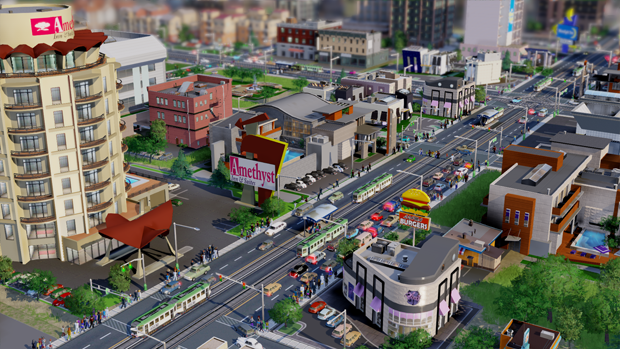In part one of our look back at 2013, we took you down memory lane to discuss some sad stories in LucasArts closing and THQ shutting shop. As well as that, we glanced over the Star Wars/EA deal and the debacle that was the development of Aliens: Colonial Marines.
Today, we’re having a look at some more highlights and lowlights from 2013.
It’s Now Cool to Be Called “Four Eyes”

The Kickstarter model has certainly seen a massive rise in 2013. Everyone seems to be using the crowdfunding model to get their projects made and while some of them have produced decent results, the jury’s still out on whether or not we, the consumer, can really put our faith in it, just yet.
Double Fine’s Broken Age getting delayed was a much debated topic, in this, the year that over $200 million was pledged to various different video game projects – as reported by GI.biz. Even though some are sceptical of the “pay now, play later” scheme, everyone appears to be happy with giving their money to virtual reality goggles.
Accumulating nearly $2.5 million last year, impressions of the Oculus Rift have gone from strength to strength over the course of the year. Currently, the dev version is the only one available, with a tentative release date of 2014 set for the retail headset. Promising to bring 1080p to your eyes, Oculus VR’s Rift has been wowing convention showfloors for quite a while now and a new addition to their team only strengthened public perception of the peripheral.

Back in August, id Software and industry titan, John Carmack, joined Oculus VR as Chief Technology Officer. He had been a supporter of the idea for a few years and that was evident in his statement after joining the Oculus VR team:
“The dream of VR has been simmering in the background for decades, but now, the people and technologies are finally aligning to allow it to reach the potential we imagined. I’m extremely excited to make a mark in what I truly believe will be a transformative technology.”
In November, Carmack resigned from his position at id Software, as Polygon reported. The company which he co-founded and created some of video games’ most important titles, is no longer the home of one of the most celebrated programmers in video games.
Steam Box and The Future of The Living Room PC

So, they didn’t announce Half-Life 3, but they did reveal something, this year. After much speculation, Valve finally made it known that they were looking at the living room PC. The Steam Box, as it was affectionately dubbed, first became known in January when hardware manufacturer Xi3 revealed the Piston at CES. Initially, it was understood that Valve and Xi3 had entered into a form of partnership, but that was apparently not the case, according to Valve.
Right after the Piston reveal, Gabe Newell said that Valve was working on their own Linux Box and in September, the Steam Machine became a reality. Well, sort of. Currently, only 300 of these exist in the wild as a few select Steam users were chosen as beta testers, but excitement surrounding SteamOS, the Steam Machine itself and the controller, is palpable.
The controller has proven to be the most intriguing element of the console as it doesn’t resemble something that we’ve become accustomed to over the past 10-15 years. Analog sticks and traditional face buttons have been replaced with two track pads. The controller will work with all Steam games, regardless of whether or not they are controller-enabled. Countless developers have come out in favour of the innovation and while we have to wait a little while longer to see how much impact it will really have on the industry, it’s definitely a positive to see someone like Valve constantly innovate in an industry that can become stagnant, at times.
It’s Hard to Simulate a City

There’s a reason why the majority of the video game playing public aren’t fond of the “always-online experience” – it’s rarely worked. There were a couple of examples this year that, once again, showed that we’re quite a ways off from the forever-connected game.
For example, Grand Theft Auto V’s multiplayer option, GTA Online, was something that had the masses wetting themselves with excitement. The possibility of roaming around San Andreas with your buddies was a delicious one. Sadly, there were a few caveats, in that, the game was basically unplayable for the first few weeks. Update, after update, after update…after update, was released in hopes of alleviating all of our issues with something that should’ve been more magical than it turned out to be.
But that wasn’t a patch – pun, most certainly intended – on Electronic Arts and Maxis’ city-building offering.

SimCity’s launch can easily go down as one of the biggest clusters in recent memory. From the get-go, players were having problems even booting up the game due to the always-online component. In order to combat this, EA switched off a number of “non-critical” features such as achievements, leaderboards, region filters and cheetah speed.
Through Giant Bomb, we saw that Amazon stopped selling the game for a time because of the unhappy user-base. Polygon discovered that EA themselves weren’t refunding the disgruntled fans who had bought the game on Origin – after Origin global community manager Marcel Hatam posted this beauty in EA’s Forums:
“If you regrettably feel that we let you down, you can of course request a refund for your order at [Origin’s “contact us” page], though we’re currently still in the process of resolving this issue.”
Hatam’s post was edited shortly after the Origin Twitter account set the record straight by informing users that they don’t generally offer refunds. How lovely.

Maxis GM Lucy Bradshaw tried to rectify some of the wrongs by offering a free game to those that bought SimCity, but also in an interview with Polygon, she stated that SimCity’s DRM was going nowhere:
“An online interconnected world has been part of our design philosophy since day one. It’s the game that we’ve been wanting to create since SimCity 4 as we’ve wanted to explore the dynamics between cities as they exist within regions. Real cities don’t exist in bubbles; they specialize and trade resources, workers and more.With the way that the game works, we offload a significant amount of the calculations to our servers so that the computations are off the local PCs and are moved into the cloud. It wouldn’t be possible to make the game offline without a significant amount of engineering work by our team.”
But, like a good storyline in EastEnders, this just kept on rolling. A number of people did tests to see if SimCity could work offline and lo-and-behold, it could! Stephen Totilo of Kotaku and Mojang’s Notch were both able to get the game running without an Internet connection, albeit for a limited time. Then a Maxis employee went to Rock, Paper, Shotgun and basically debunked everything that Bradshaw had said only a few days prior:
“The servers are not handling any of the computation done to simulate the city you are playing. They are still acting as servers, doing some amount of computation to route messages of various types between both players and cities. As well, they’re doing cloud storage of save games, interfacing with Origin, and all of that. But for the game itself? No, they’re not doing anything. I have no idea why they’re claiming otherwise. It’s possible that Bradshaw misunderstood or was misinformed, but otherwise I’m clueless…It wouldn’t take very much engineering to give you a limited single-player game without all the nifty region stuff.”
Bradshaw attempted to counter-act that by answering some questions in a blog post, but in all honesty, it was still lacking. Seven months after the game’s launch, it was announced that EA and Maxis have begun to look at adding an offline mode to the game.
Seven months after the game’s launch.
Jesus.

We’re nearly there. Tomorrow marks the third and final part of our look at the events of this past year. As well as some Nintendo chatter, we’ll be looking back at two moments that defined Sony and Microsoft’s years, respectively.





